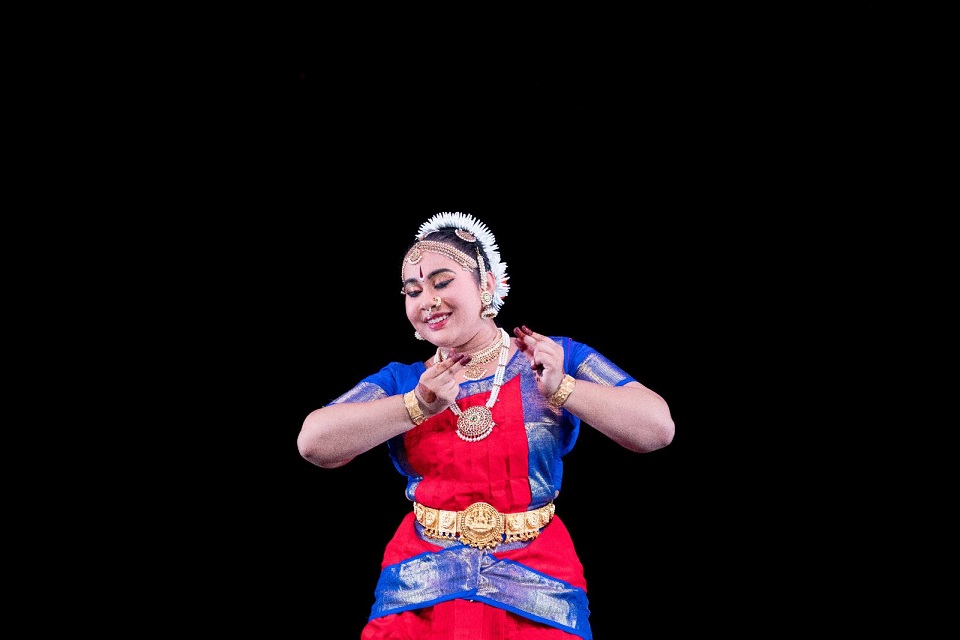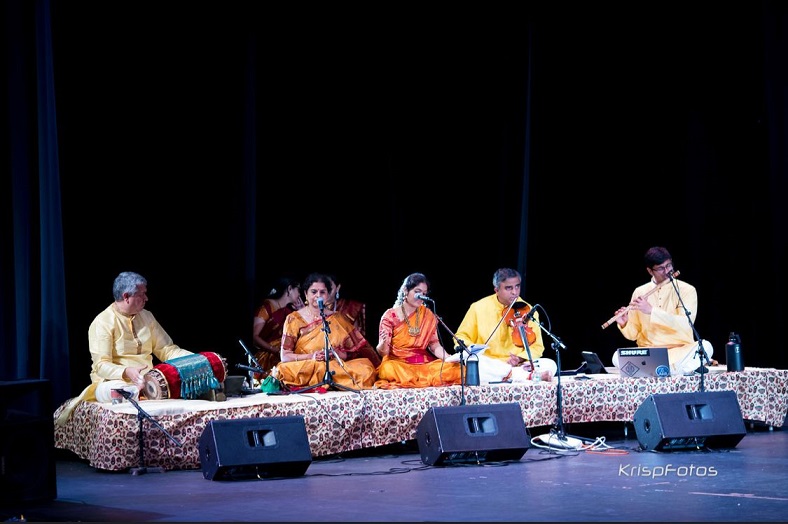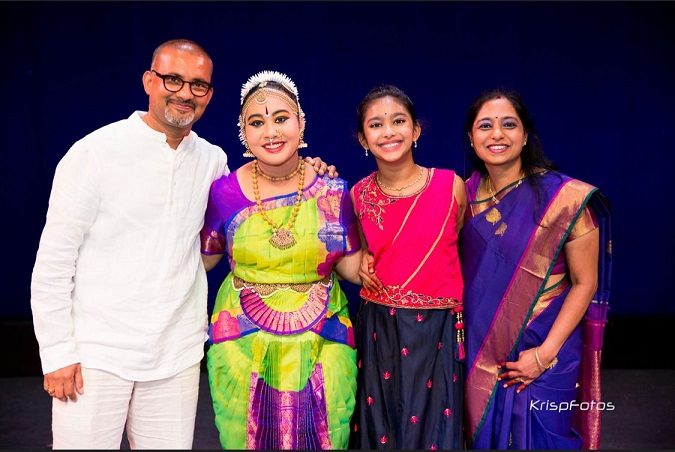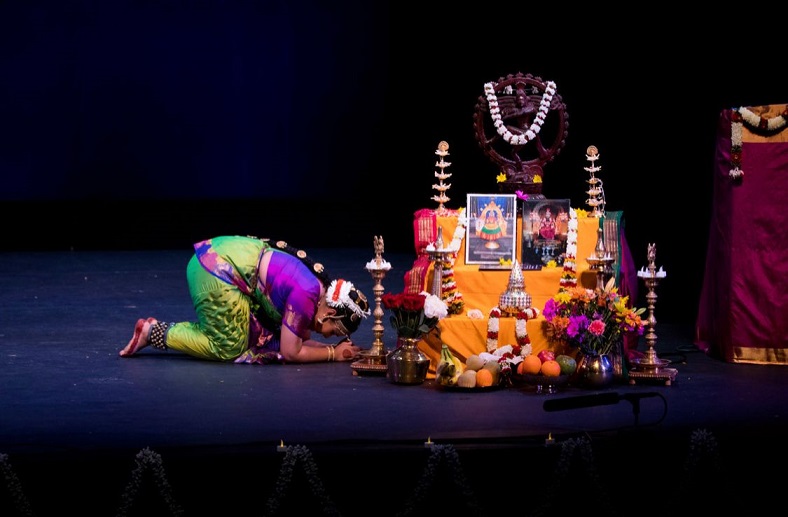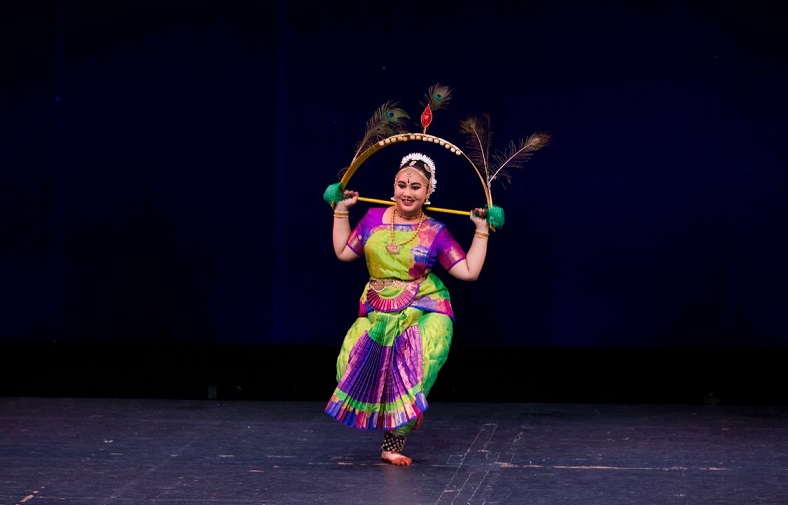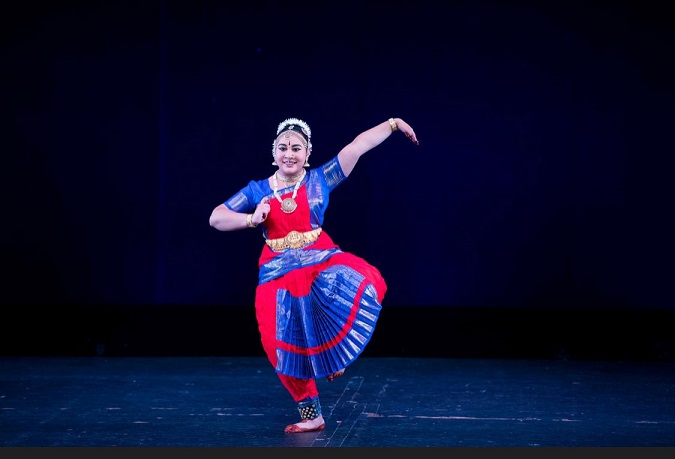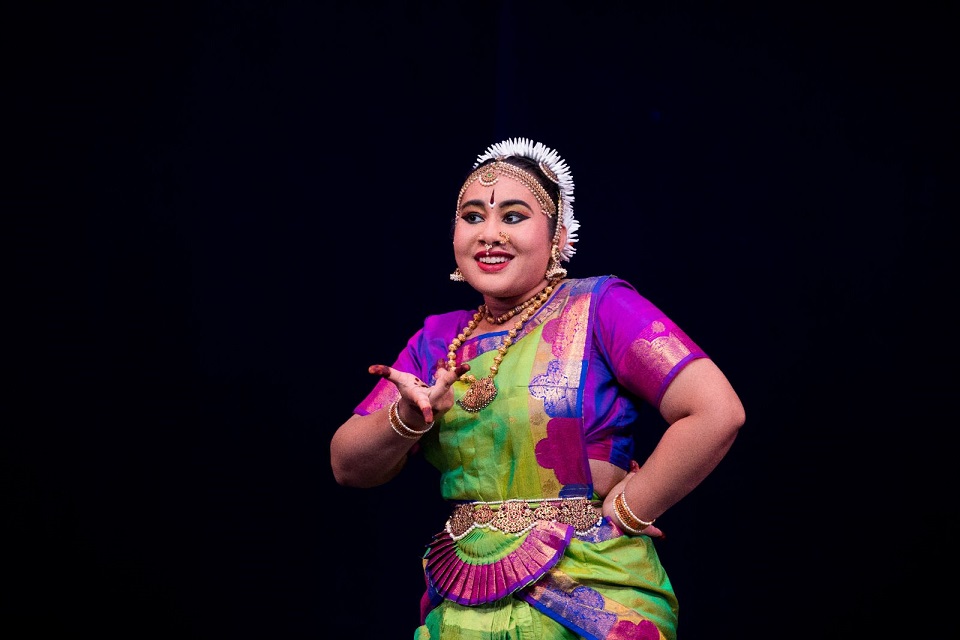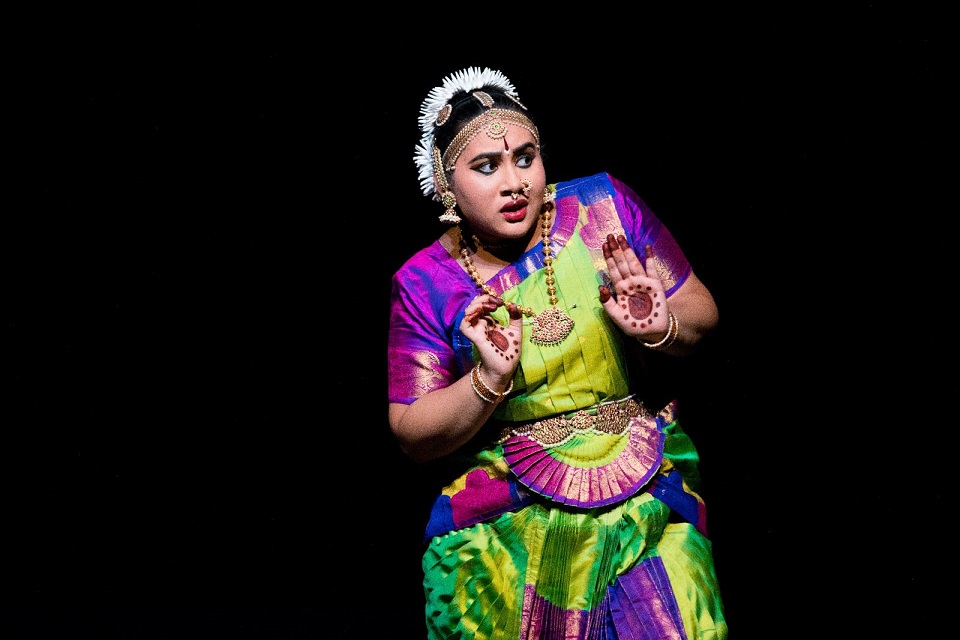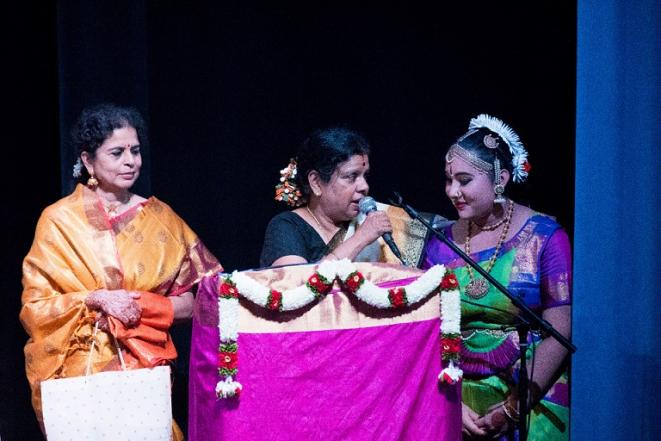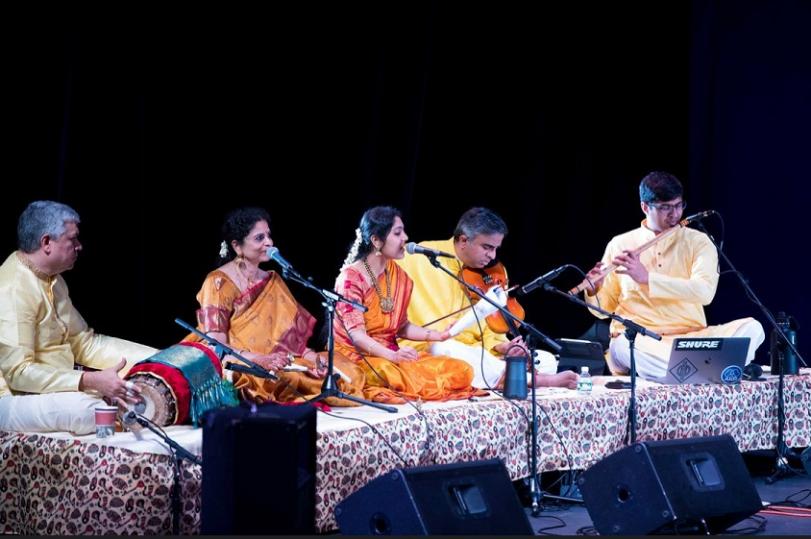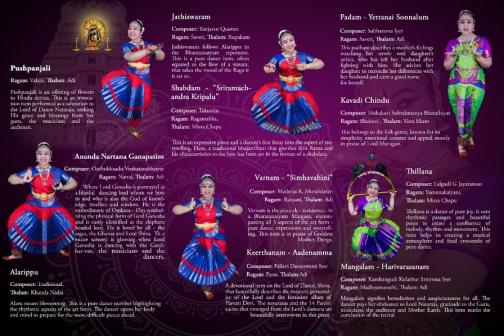Contribute
| Arangetram - Arya Swamy |
S. Ramamoorthy
08/12/2021
Arya Swamy’s arangetram - long wait bears fruit with a laudable accomplishment! What a great letup from the lengthy Covid-19 detention! The jubilation was writ largely on everybody's face - happy return to summer activities, fine arts embellishments! Whenever I think of Bharatanatyam arangetram, I fondly recall the old and famous quote, "There is no wisdom or knowledge, no art, no craft or action that is not found in Natya". I was delighted to see this come alive yet again on 7th August at Arya Swamy’s arangetram that was staged at the paleaceous Collins center auditorium in Andover, MA. The debutante` Arya Swamy came under the tutelage of Guru Jeyanthi Ghatraju at Natyanjali, about eleven years ago. Over these years she had been keen on equipping herself admirably evincing greater enthusiasm, participating in various programs and fund raisers. Indeed, Guru Jeyanthi Ghatraju has been offering sustained tactful teaching besides providing Arya with ample opportunities to rise to stage ascendancy, with full confidence. In keeping up with tradition, Guru Jeyanthi Ghatraju enriched the arangetram format with carefully picked items of an ideal arangetram, right from the invocation to mangalam. As the nattuvanar and the EmCee of the program, Jeyanthi took the audience along the pilgrimage to a temple that a margam is supposed to equate, with pertinent details on the pieces. It was quite admirable and appreciated by the audience and helped them be in tune with the proceedings. Arya commenced her arangetram with a Pushpanjali, in Valaji ragam set to Adi talam, wherein, she offered salutations to the ashta digpalakas (presiding deities of the 8 directions), to Nataraja, the Lord of dance, besides seeking the grace and blessings of Gurus, the musicians, and the esteemed audience. She followed that with Ananda Narthana Ganapathim, composed by Oothukkadu Venkatasubbaiyar in ragam Nattai set to Adi talam. Arya exhibited the jubilation of lord Ganesha dancing with the celestial musicians; it was quite an amusing display. The next item was alarippu (a rare presentation in arangetrams these days!) in Khanda nadai of 5 counts. This item of pure rhythmic play was pleasing and set in a different tone, compared to the even cycles presented in previous numbers. Next in number was Jathiswaram in ragam Saveri set to Rupaka talam (3 beats), composed by the famous Thanjavur Quartet. The passage of the exposition in jathiswaram simulates the flow of a stream and the choreography was enriched with intricate rhythmic sequences fused with repetitive musical notes that Arya portrayed with effable ease! Having excelled in the preliminary aspects in the arangetram format, Arya moved on to perform Shabdam, a foray into the world of expression and storytelling. Guru Jeyanthi tastefully adapted the popular bhajan, Sri Ramachandra kripalu bhajamana, by Saint Tulsidas, into a shabdham format as a ragamalika in Misra Chapu thalam (7 beats). In this item Arya beautifully enacted the glories of Lord Rama as envisioned by the composer and elaborated on the verse Navami Janaka suthavaram with the story of how Rama married princess Sita. Guru Jeyanthi introduced the live orchestra that had been providing the lifeline for the recital. The team of highly accomplished musicians comprised of Jeyanthi Ghatraju (nattuvangam), Harini Darbha (Vocal), Gaurishankar Chandrashekar (mridangam), Surya Sundararajan (violin) and Chethan Ananth (flute). The synergy amongst them was the highlight of the day that provided Arya the much-needed support and moral boost as she performed her pieces with ease. Next, Arya took the audience into the much-awaited piece-de-resistance in a Bharatanatyam Margam, the Varnam. Simhavahini, in ragam Ranjani set to Adi talam, composed by Madurai R Muralidaran, in praise of goddess Mother Durga was apt, given the current pandemic. It was specially chosen as a dedication to Arya’s grandfather who is an ardent Devi bhaktha. Arya show-cased her dancing prowess attained over the years in this item, whether it was the intricate jathis, or the underlying expressions. Her sancharis for story telling explaining the origin of Sri Lalitha sahasra namam, story on humility, Shiva-Parvathi kalyanam and Mahishasura mardhini were poised and mature. Several in the audience appreciated the mime presented by the Guru and Arya on the stories being presented. Arya excelled amicably with her deft dance movements, studded with elegant hand gestures and emphatic facial expressions and was lustily cheered by the audience. The proceedings on the stage resumed after a brief intermission. The instrumentalists, Surya on the violin, Chethan on the flute and Gaurish on the mridangam took over the stage and enthralled the audience with the lilting music, presenting the time-tested composition of Saint Purandaradasa, Jagaddodharana. After the reverberating Varnam bonanza, Arya embarked on presenting three padams – keerthanam, javali and a folk piece by different composers. The first one was keerthanam, “Adenammaaâ€, by Pallavi Duraisamy Iyer in Ragam Paras set to Adi talam. The navarasas (9 basic emotions) and the 14 Panini sutras that emerged from the Lord’s damaru (drum) were beautifully interwoven and Arya’s strengths in abhinaya shone radiantly in this piece. The last one was a kavadi chindhu, composed by Poet Subramania Bharathiyar in Bhairavi ragam set to the traditional Tisra Ekam talam. Arya extracted the simplicity in the emotional appeal of the devotees to Lord Muruga. It was rejoicing to watch the old folk genre on stage, at the same time, touching to know the happenings in the family around the time when Jeyanthi choreographed this piece for Arya to learn and it was reassuring to see how Lord Muruga protected the family. Having scored admirably in the previous items, Arya was all smiles as she proceeded to perform the culminating piece of the day's program – Thillana; the ambience of thillana explores the kinetics and skills in terms of rhythm. Indeed, Arya lived through the soul-stirring lyrics of the composition of the composer, music maestro, Lalgudi Jayaraman and engaged the audience in rejoice throughout the rendition. The arangetram concluded on an auspicious note with Harivarasanam, in adoration of the Swamy family’s family deity, Ayyappan. Vocalist Harini’s melodious voice melted so many hearts as this was rendered and filled the air in the auditorium with immense bliss. It was so appropriate that Guru Jeyanthi invited Smt Ranjani Saigal, a well-known dancer and teacher from New England, to be the Guest of Honor and present the Certificate in Bharatanatyam from Alagappa Performing Arts Academy, that Arya completed as part of the online program under Guru Jeyanthi’s guidance. Ranjani touched upon the perfect “triangle†consisting of the child, parents, and teacher, that is an important factor for a child’s accomplishments and appreciated Arya especially for her mature and poised abhinaya. Parents, Vijaya and Anand Swamy and sister, Advika, thanked the entire crew consisting of immediate and extended family for decorations and logistics support throughout the journey, musicians for the excellent music support, Jawed Wahid for the flawless sound engineering along with staff at Collins center who helped with the fantastic arrangements and the successful proceedings of the arangetram. Photo credits: Krish Velmurugan of Krisp Fotography.
The second one was a javali, “Eththanai sonnaalumâ€, a composition by Subbarama Iyer in the ragam Saveri set to Adi talam. Arya role-played the laments of a mother over the indifferent antics of her newlywed daughter towards her husband and that of the daughter, with eloquent poise and maturity.
You may also access this article through our web-site http://www.lokvani.com/
